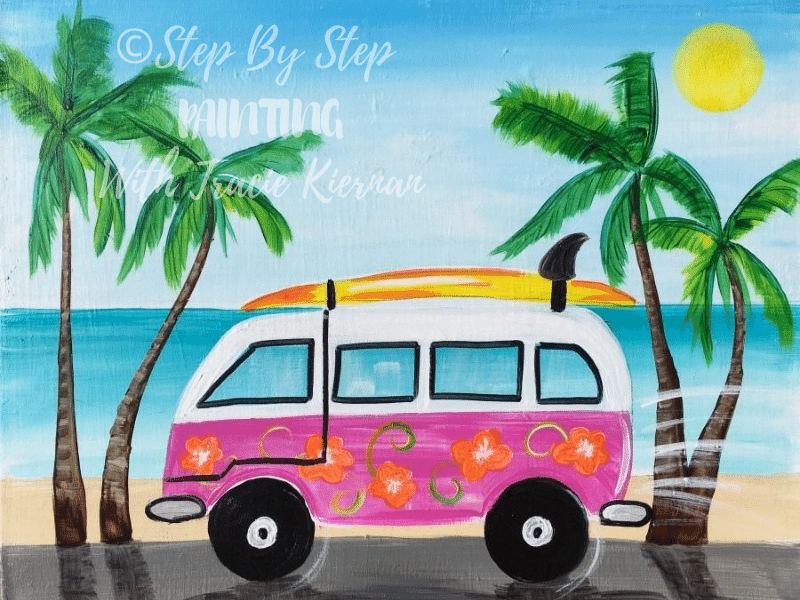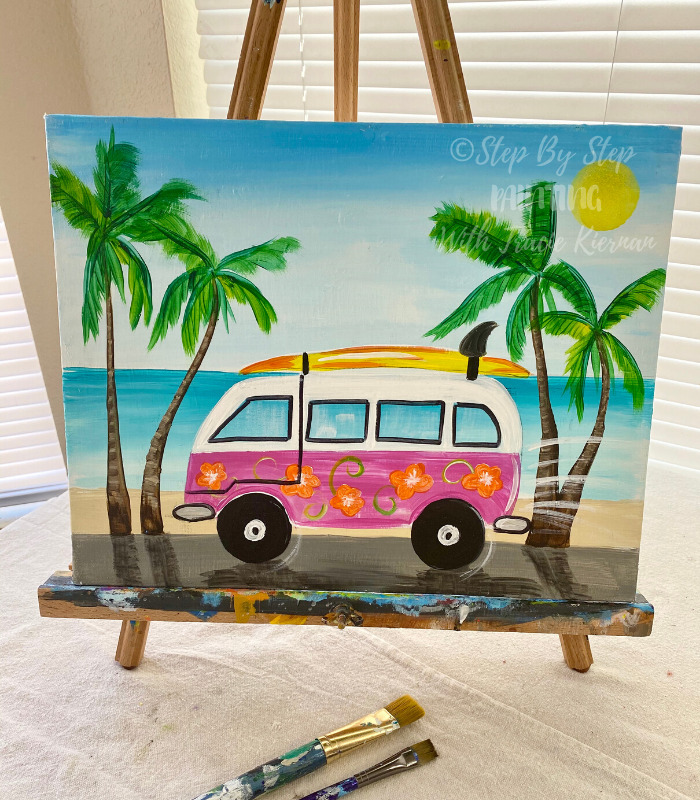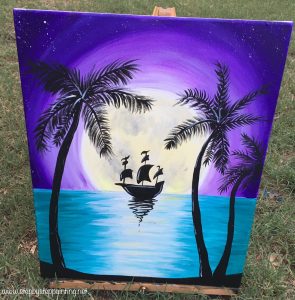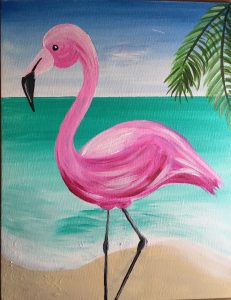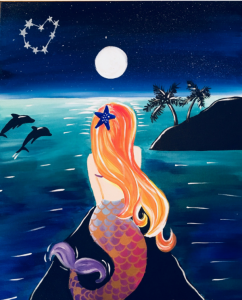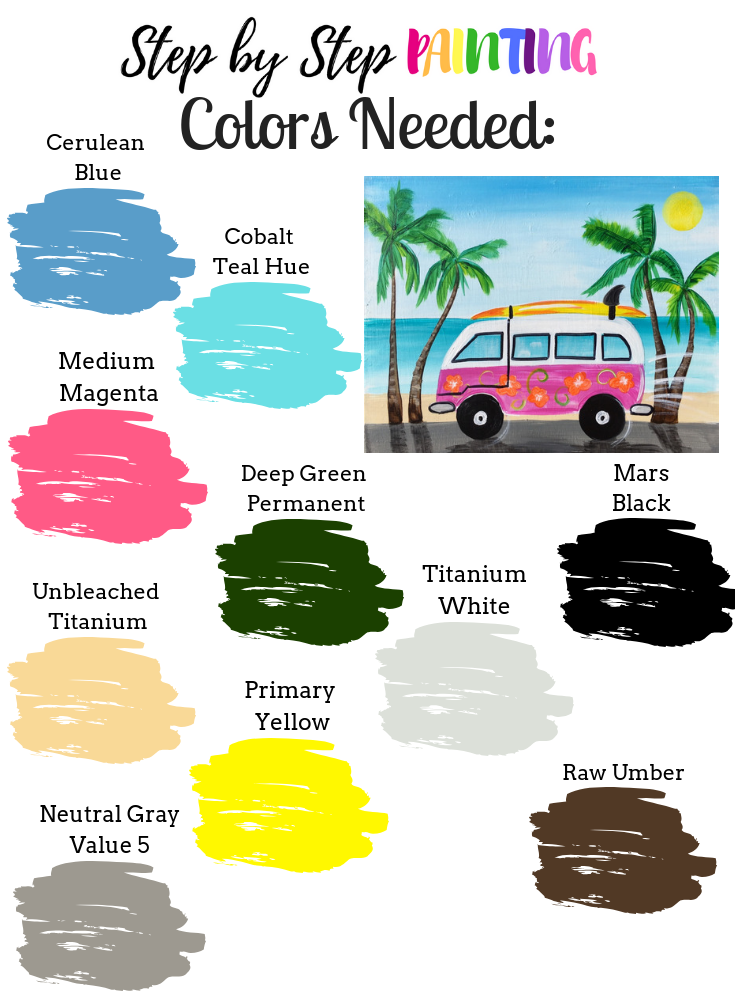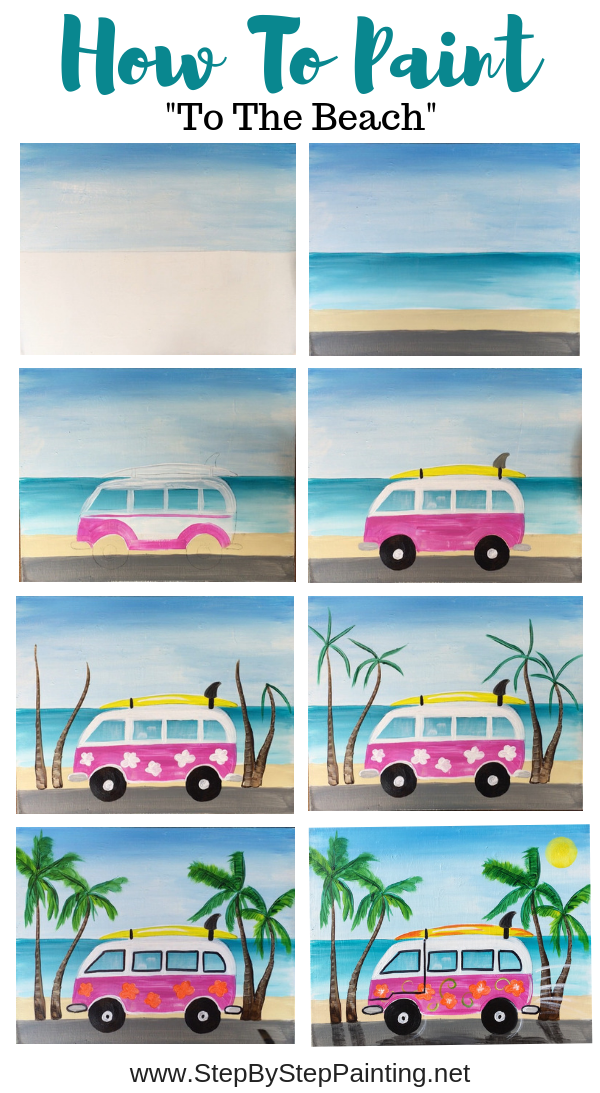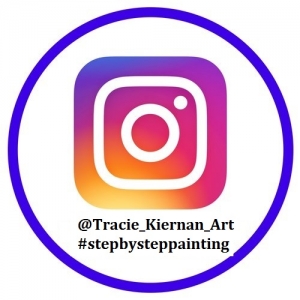How to Paint A Beach Van
Learn how to paint a fun colorful beach van on the road aside the ocean. This step by step acrylic painting tutorial includes a traceable of the beach van as well as detailed steps on how to do the painting.
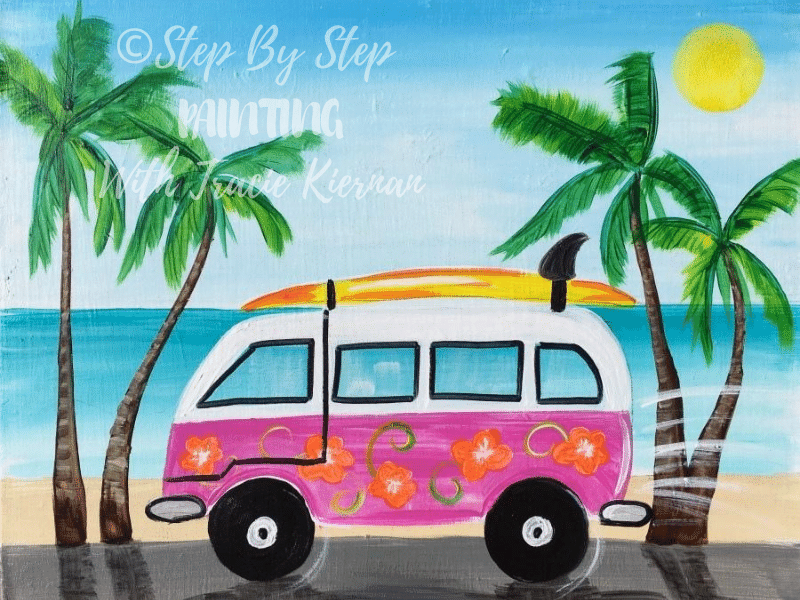
Would you like to save this?
See Also:
Materials
How To Paint "To The Beach"
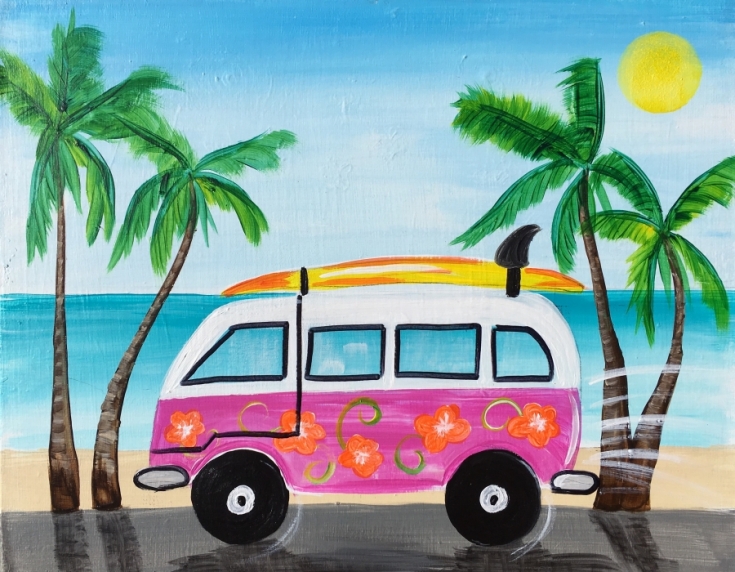
Learn how to paint this super fun pink beach van on its way to the beach. This is an easy acrylic canvas painting tutorial for beginners with a free traceable of the beach van.
Materials
Basic Supplies
- 11" x 14" Canvas
- Acrylic Paints
- Paint Brushes
- Sharpie or Black Paint Pen
- Optional: medium round pouncer for circles
- Traceable
- Graphite Paper
- T-Square Ruler (Or paint tape if you prefer)
- Pencil
Colors
- Titanium White
- Mars Black
- Cerulean Blue
- Cobalt Teal Hue (DecoArt Americana Premium Tube)
- Unbleached Titanium
- Neutral Gray Value 5
- Raw Umber
- Cadmium Orange Hue
- Deep Green Permanent
- Primary Yellow
Brush Sizes
- 3/4" Flat
- #12 Flat
- #4 Round
- #10/0 Round
Color Palette
There’s quite a few colors in this painting! It’s usually the goal to go for a minimal palette but a lot of times I end up using ALL THE COLORS. This design was no exception. Tropical, fun beach paintings are colorful.
Most of the colors I used very little amounts of so you don’t necessarily have to go out and buy large tubes of those colors. If you use the Liquitex BASICS 48 piece set, this is the perfect painting for that because you’ll have all your colors ready! The one color, however, that I used a lot of was titanium white – so you may want to grab a tube of that if you’re running low on white.
Also, there was one special color in this painting that is not the Liquitex BASICS brand. It’s the “Cobalt Teal Hue” by DecoArt Americana Premium.
I LOVE this “Cobalt Teal Hue”! It’s a deeper turquoise looking color than “Bright Aqua Green”. If you don’t want to go out and buy this tube, you can try Bright Aqua Green by Liquitex BASICS and mix a little bit of Phthalo Green into it to darken the color a bit.
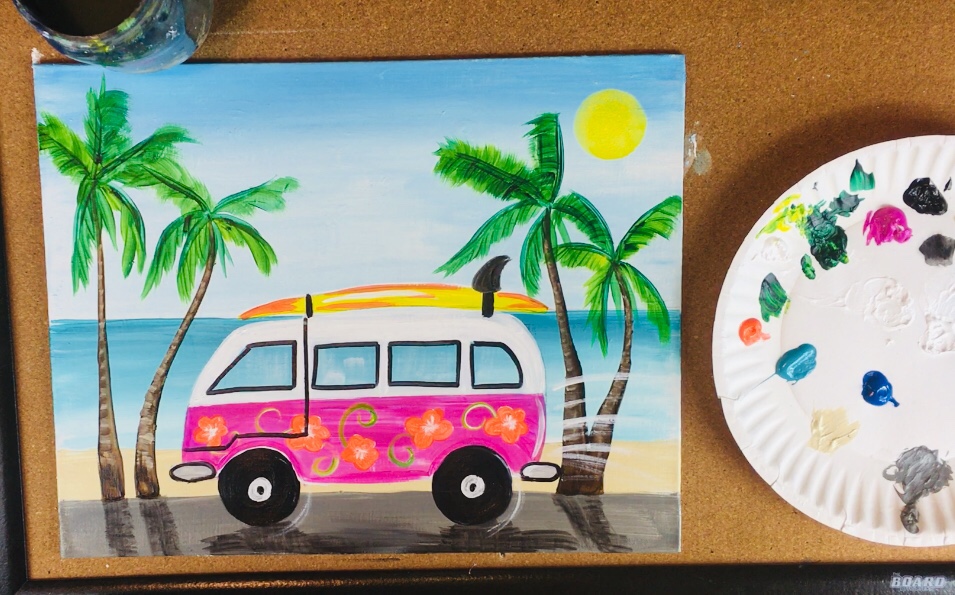
You may also wish to customize the color of your beach van, however, I recommend a warm bright color so your painting will “pop” against the blues in the background.
Traceable
You can grab the PDF version of this traceable in my printable library OR click here for the download!
I recommend printing it on an 8.5″ x 11″ (standard size) computer paper. The van was traced after the sky, ocean, sand and street were painted and dried. Use a sheet of gray graphite paper for the transfer.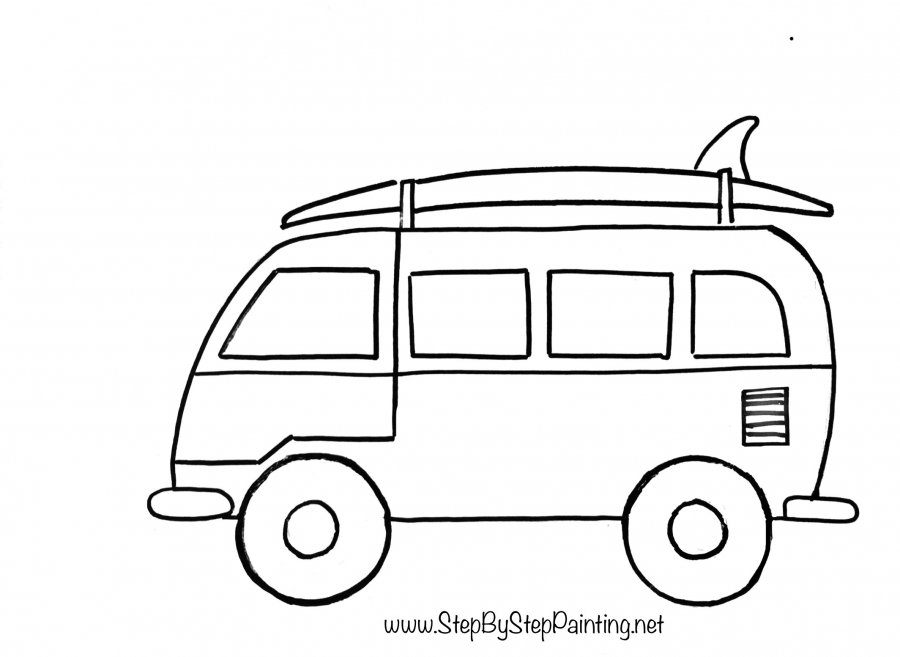
Need to learn more about how to transfer to canvas?
Need to learn how to enlarge the traceable for a larger canvas?
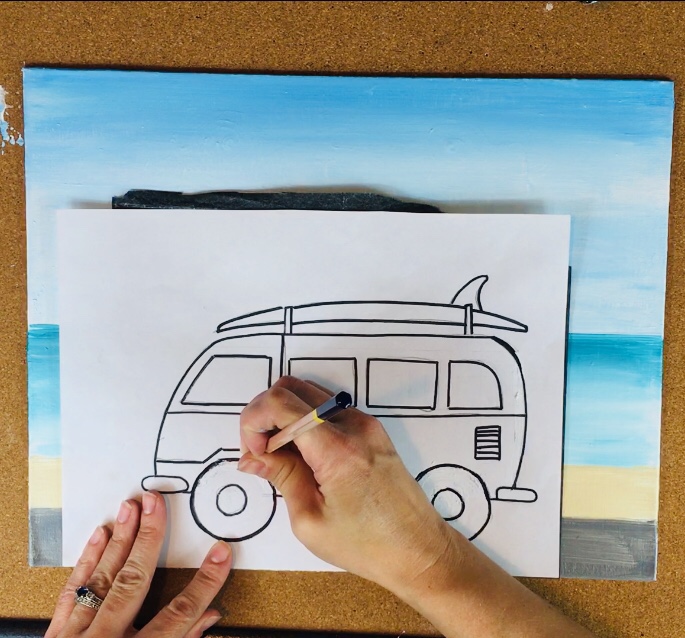
I used a sheet of gray graphite paper and a standard pencil to trace the vehicle. The graphite paper is between the print out and the canvas.
Directions At A Glance
Video
Step By Step Directions
1. Draw the horizon line exactly in the middle (with canvas in landscape mode)
Using a T-Square ruler, estimate the center of the canvas and then lightly draw a horizon line with a regular pencil. 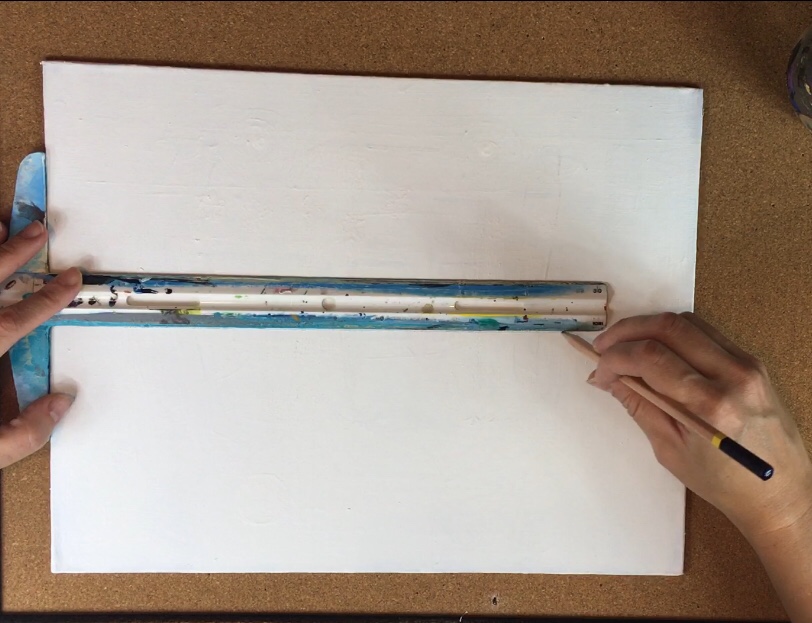
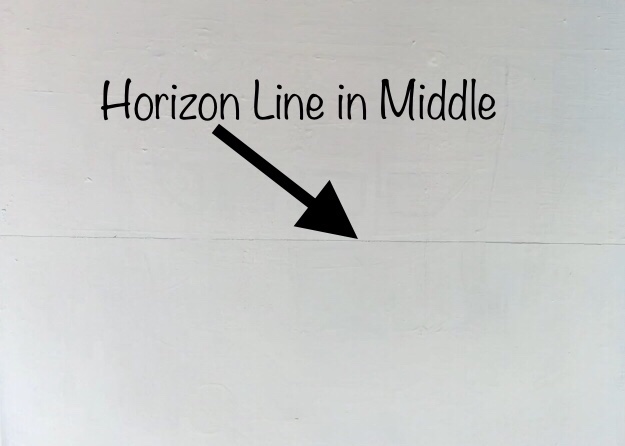
2. Paint the sky cerulean blue and titanium white using a 3/4″ flat brush
First dip your 3/4″ flat brush in water and pat it dry. Start with titanium white and add a layer of white at the very top. Paint long left and right horizontal strokes. 
Then add in cerulean blue without rinsing your brush. The cerulean blue should make the top a light blue as it blends with the titanium white. 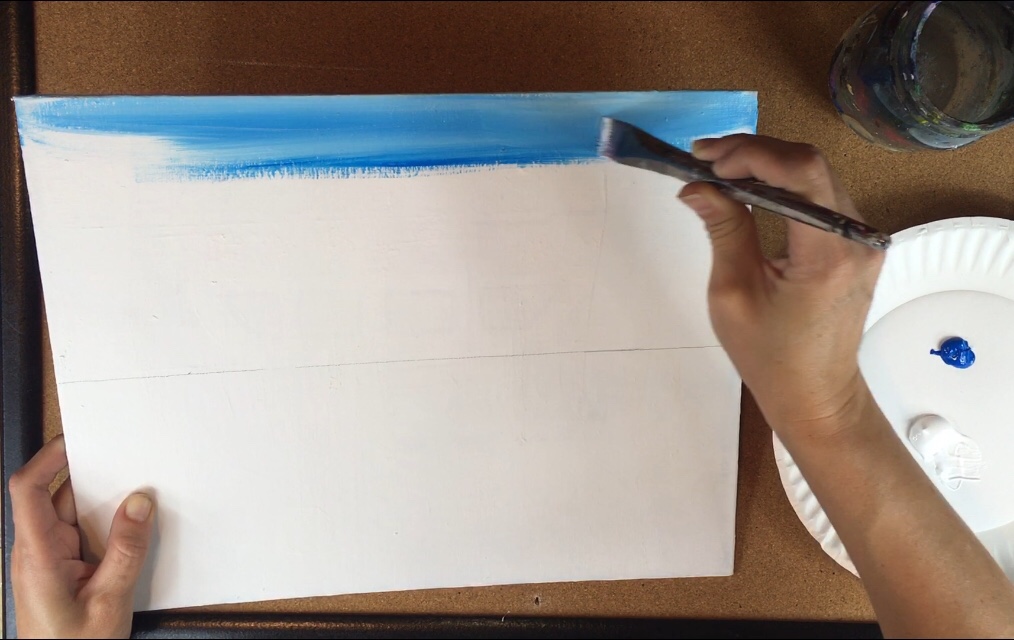
As you work your way down the canvas, add more white to your brush. The blue should be lighter and lighter as it approaches the horizon line and then turns very light blue. 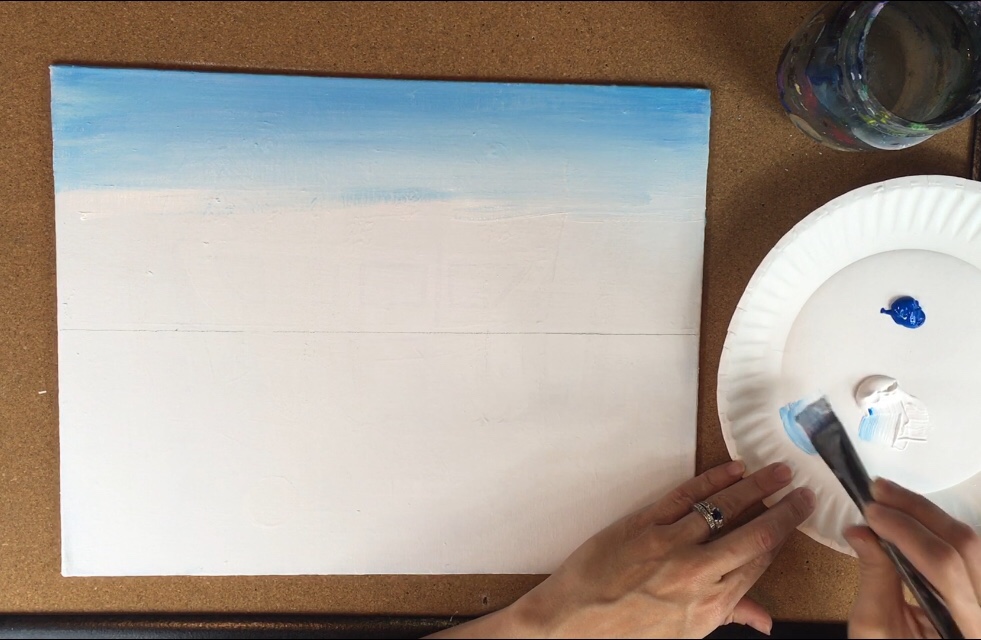
Go all the way to the horizon line, the color should be very light blue almost white along the horizon line. 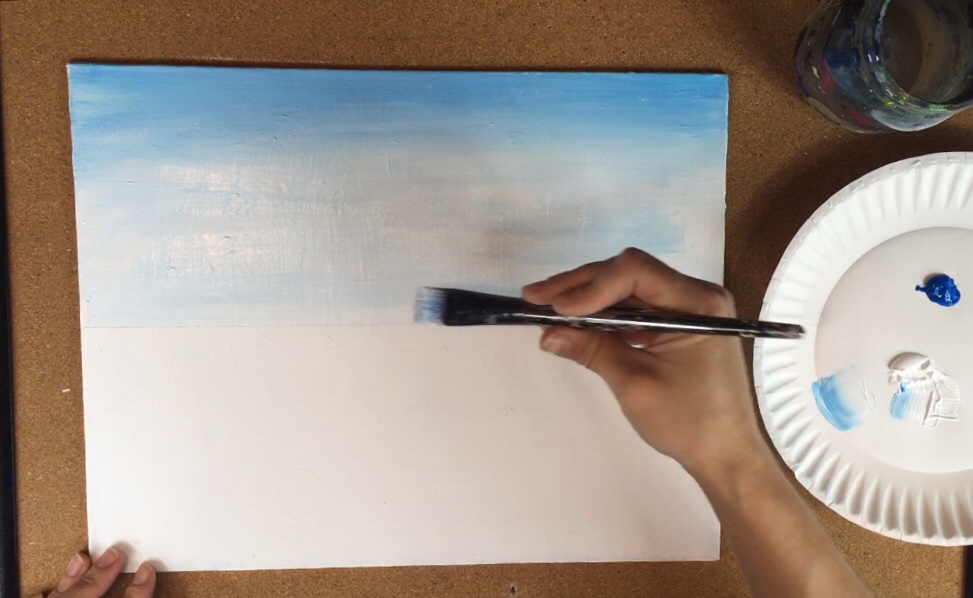
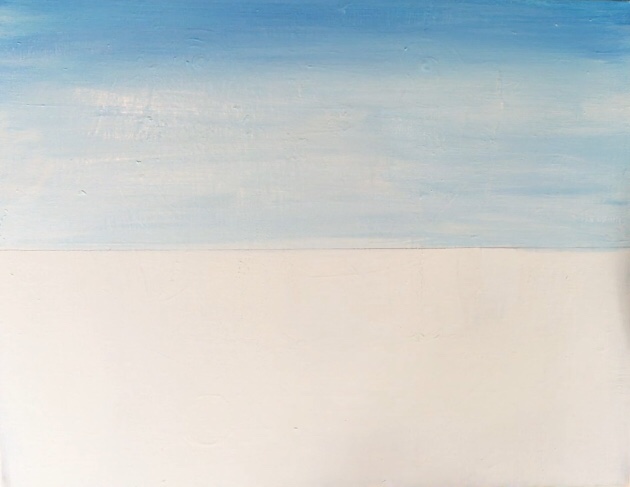
3. Paint the water
First I estimated about 3-4 inches of space and drew another horizontal line with a pencil. This line will be where the water ends and where the sand begins. 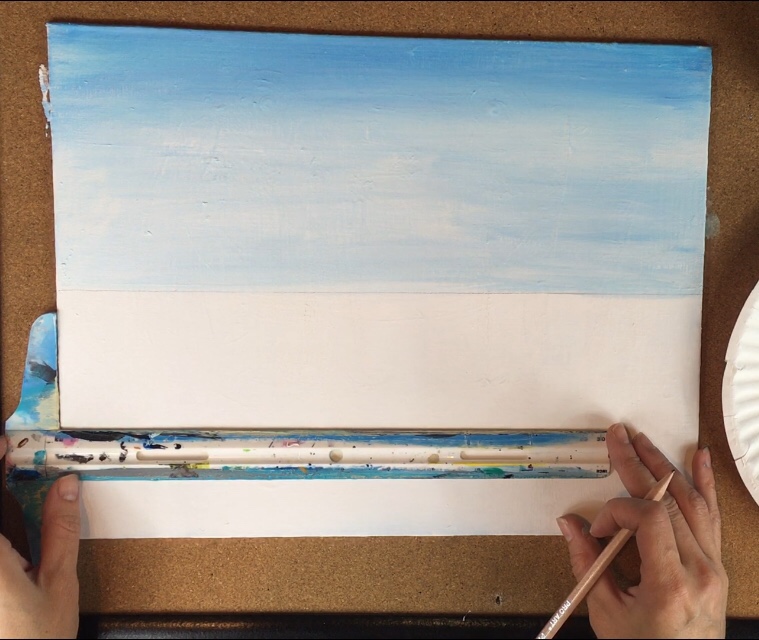
Then I used my 3/4″ flat brush (cleaned and rinsed off) and the color cobalt teal hue. Paint horizontal strokes at the top and go down about an inch. 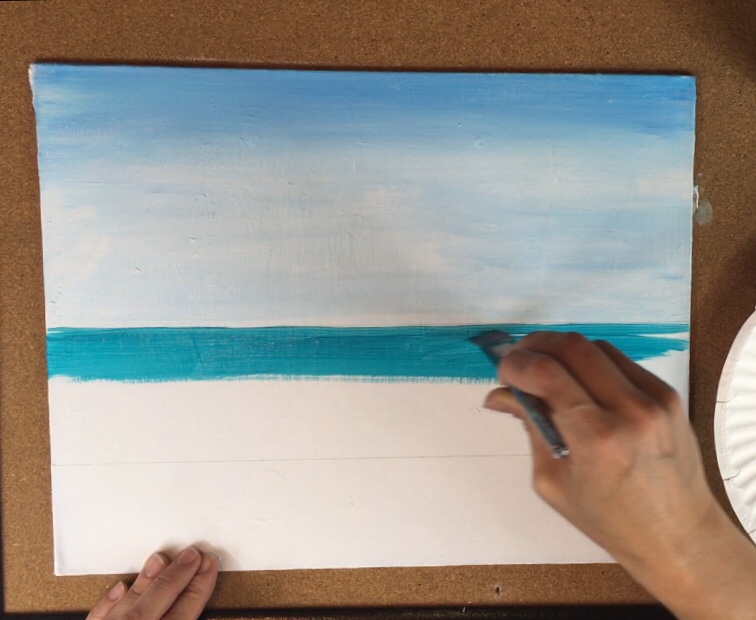
Then add titanium white on your brush without rinsing. In the same way you did the sky, do the same with the ocean. The cobalt teal hue starts out dark and pure and then you gradually add white to it to lighten the color as you work your way down. The blue should be lightest on the bottom.
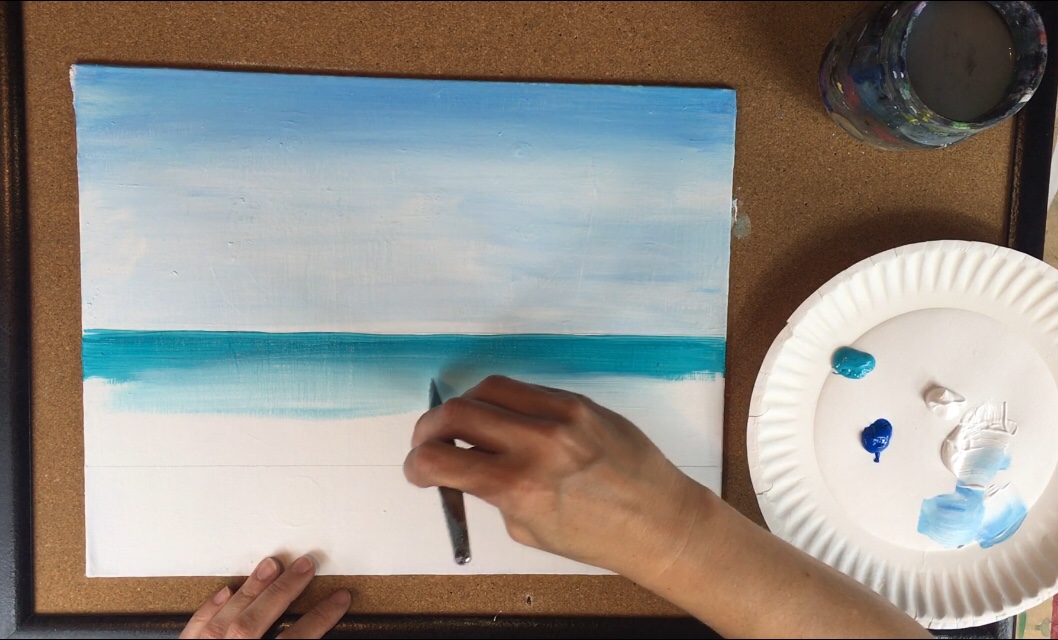
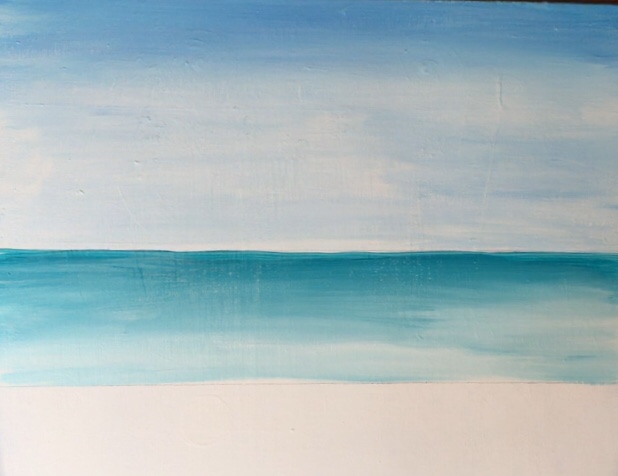
4. Paint the sand and road
Again draw another horizontal line using the T-Square ruler. I estimated about half of the space that was leftover. 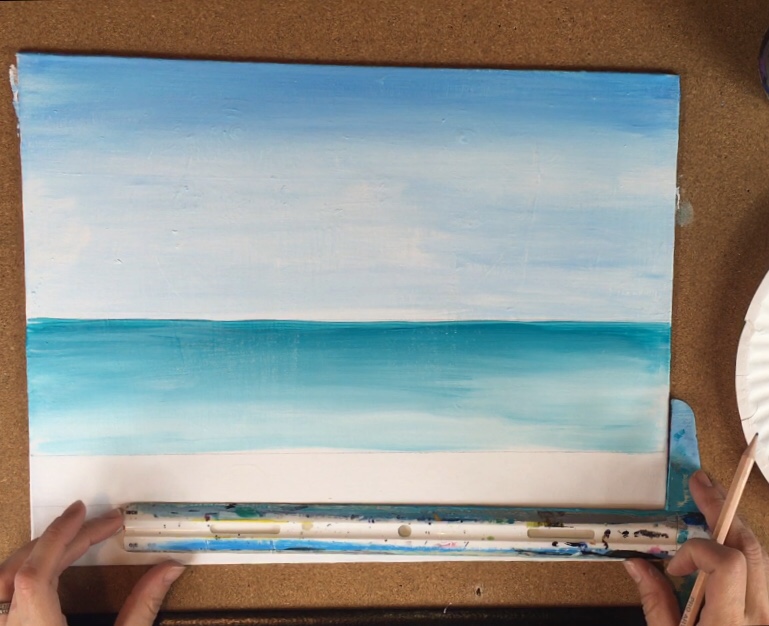
Then I used unbleached titanium and a 3/4″ flat brush to paint the top of the space.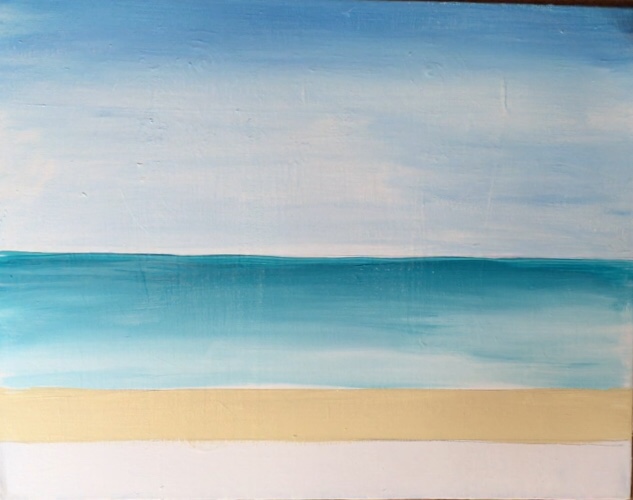
The road area was painted with neutral gray value 5. 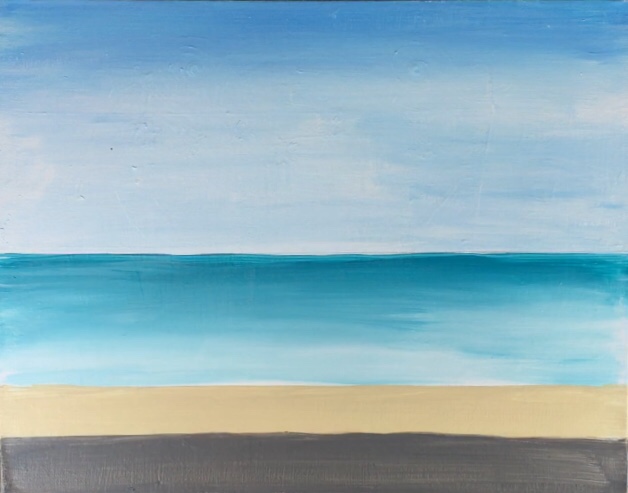
5. Transfer the traceable
Use a sheet of graphite paper in between the traceable and canvas. Use a regular pencil to trace the van.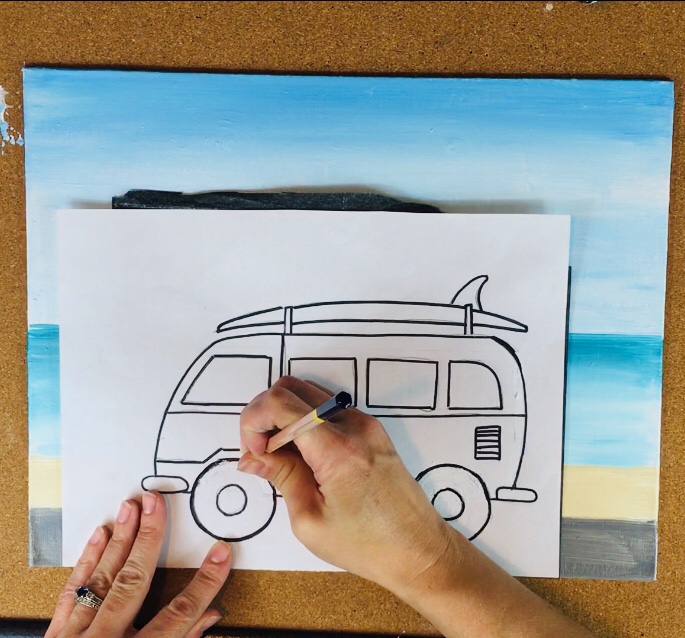
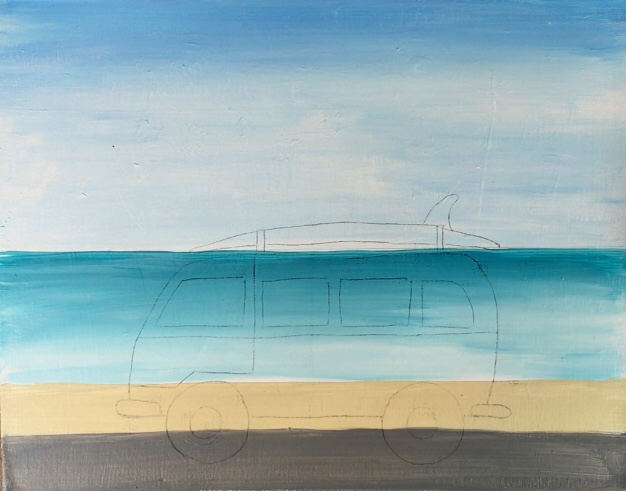
6. White out most of the van
Using a #12 flat brush (because it’s smaller) and titanium white, paint most of the van as well as the surfboard on top white. 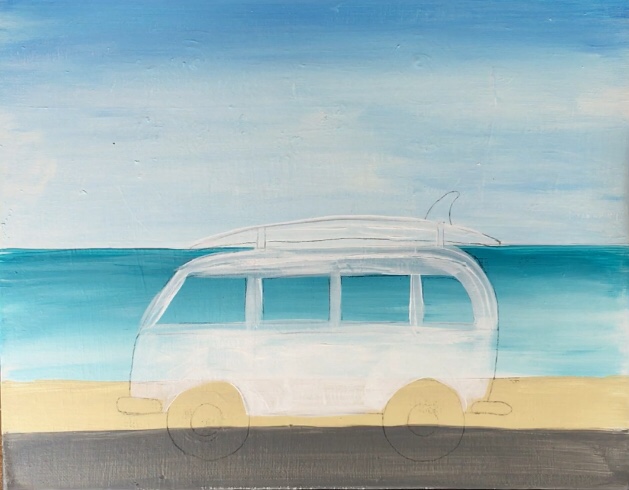
7. Paint the bottom medium magenta (or your color choice)
You may want to wait for your white to dry completely. Mine kind of mixed with the white because it wasn’t dry all the way but I liked the effect so I “went with it”. Basically I painted the bottom half of the van with medium magenta. Tip: make your strokes “contour” with the shape. In other words, the direction of the strokes should go in the direction of the shape you are filling in. 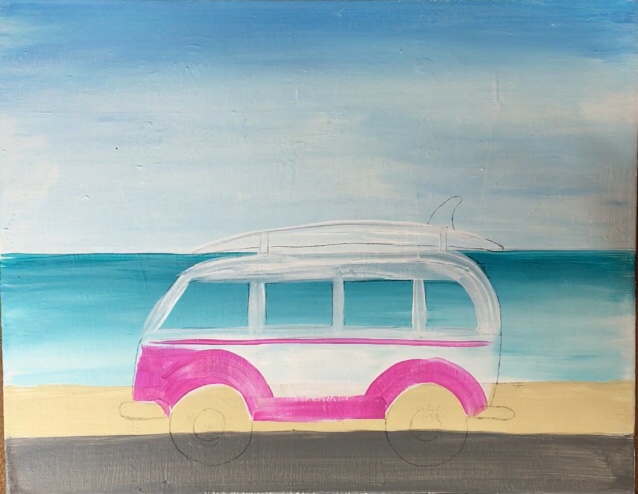
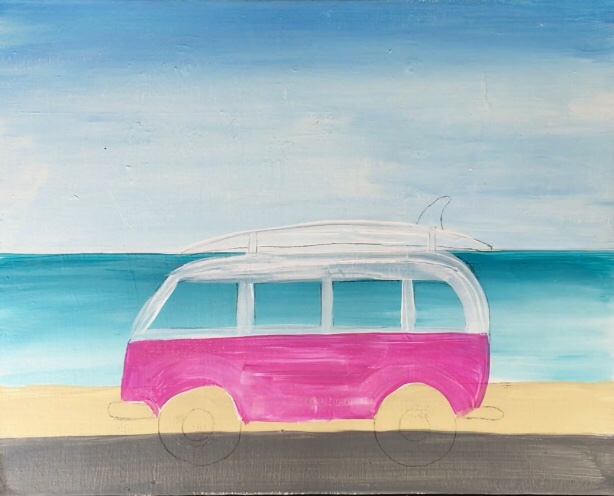
8. Paint the wheels
For the wheels, I used mars black and a #4 round brush. You may wish to use the flat brush or even a foam pouncer for the circles – whichever you feel more comfortable with. I also painted the front bumper and back bumber (or exhaust) with neutral gray value five. 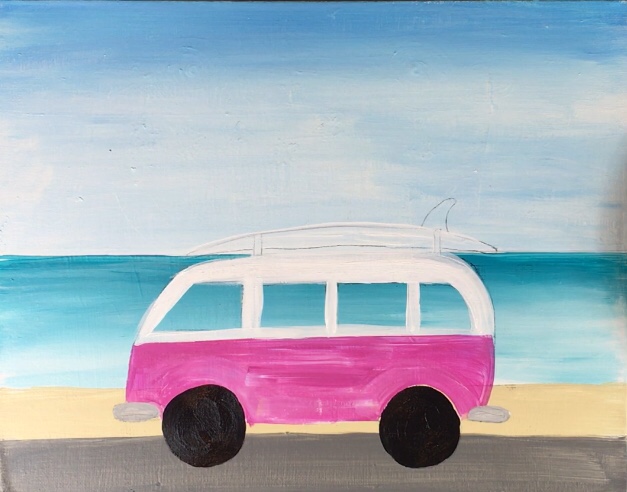
9. Paint the surfboard
I used primary yellow and neutral gray value five for the surfboard. I also added white circles on the wheels. I also added some “dry brush marks” on the window with titanium white. To get that dry brush effect, dip you brush in white and then wipe off most the paint with a paper towel. Paint little up and down strokes to get the dry, translucent effect on the windows. 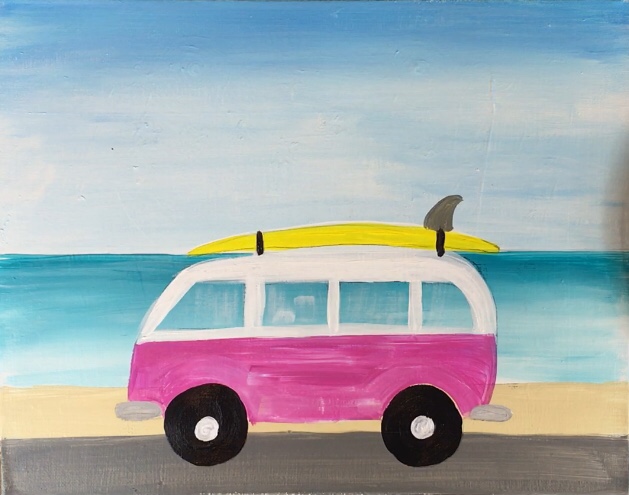
Then I used a 10/0 round brush (a very tiny brush) to add the base layer of titanium white for the flowers. 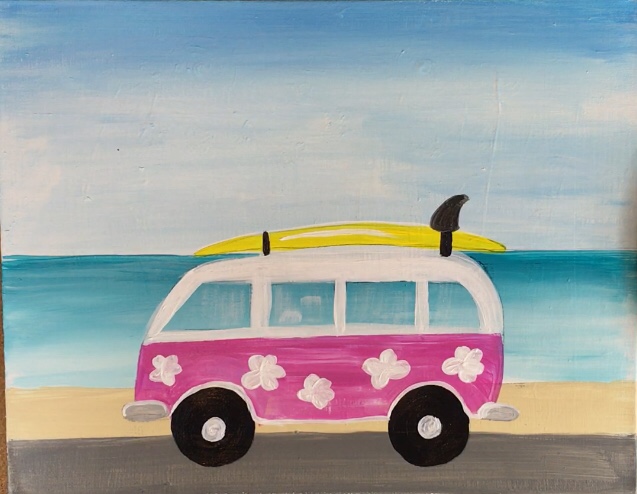
10. Paint the palm trees
Do do the palm trees, I used raw umber and my #12 flat brush. Start at the bottom of the trunk and make kind of a thick line. Then twist your brush to make the line go thinner as you go to the top of the trunk. Also make this line look kind of wavy. 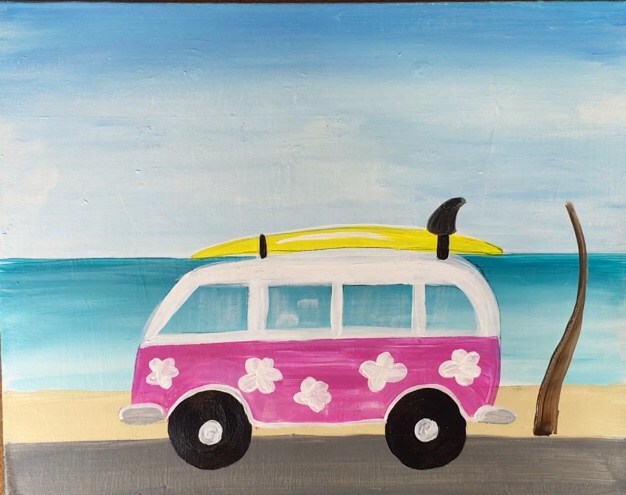
I did two trunks on each side of the van. Each trunk is slightly different in height and is curved differently. 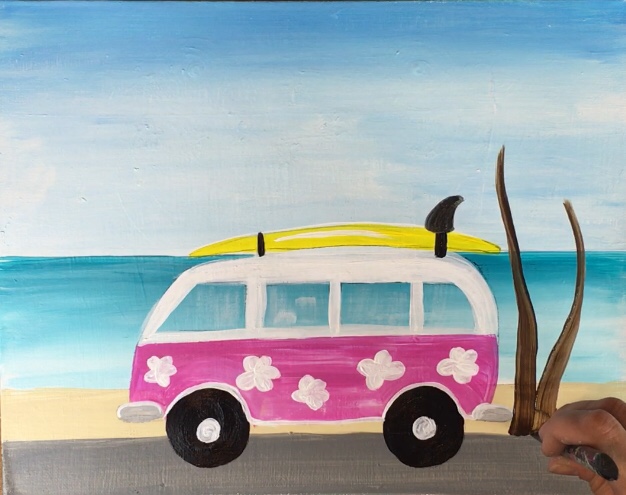
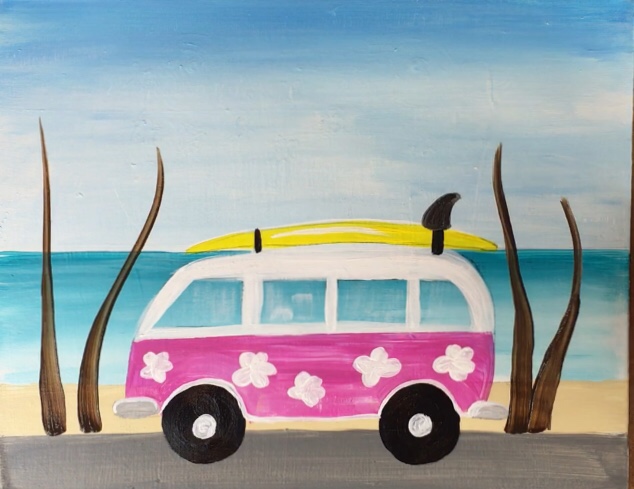
To add the texture to the trunk, dip your not rinsed brush in unbleached titanium. Use the full width of the brush to draw little strokes on the trunk. The unbleached titanium should blend with the raw umber. Make these little strokes kind of curved to make the trunk look a little 3D.
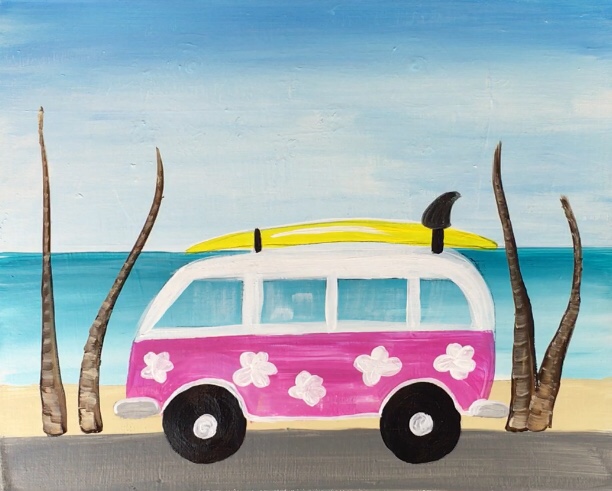
For the branches, I used my #12 flat brush and deep green permanent. Use the tip of the brush to paint the middle part of the branches.
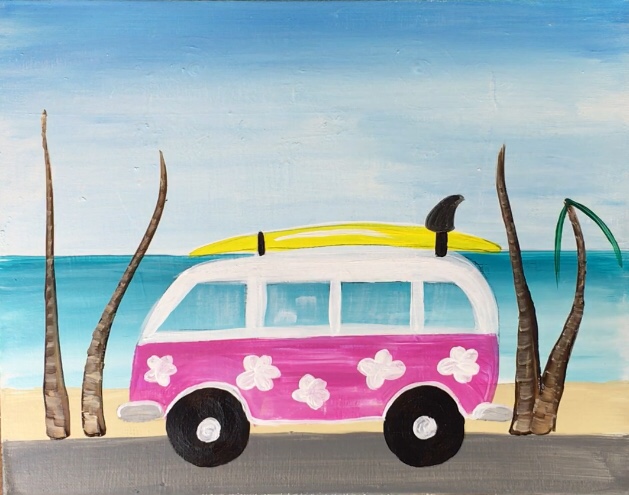
On each palm tree I painted five lines going in all different directions.
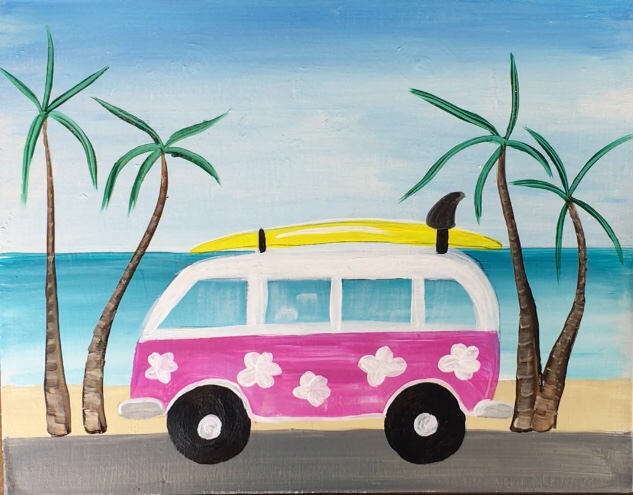
To paint the palms, I double loaded my brush in both deep green permanent and primary yellow. Double loading means to dip it in both colors (I did about equal amounts). Use the full width of the brush to drag each stroke starting from the middle palm line and “whisping” down. The colors should blend together to create a yellow-green and the stroke will look like a palm. Try easing up on the amount of pressure you are holding the brush with as you go down with each stroke.
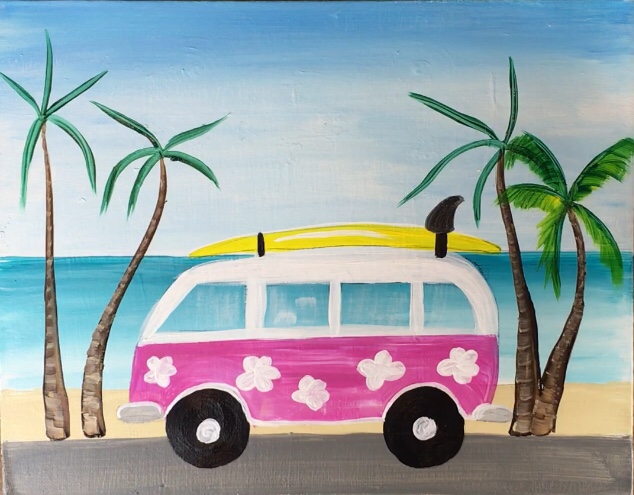
As you reload your brush, try to grab different amounts of green and yellow. This will create variety in the colors so all the palms aren’t the exact shade of green. 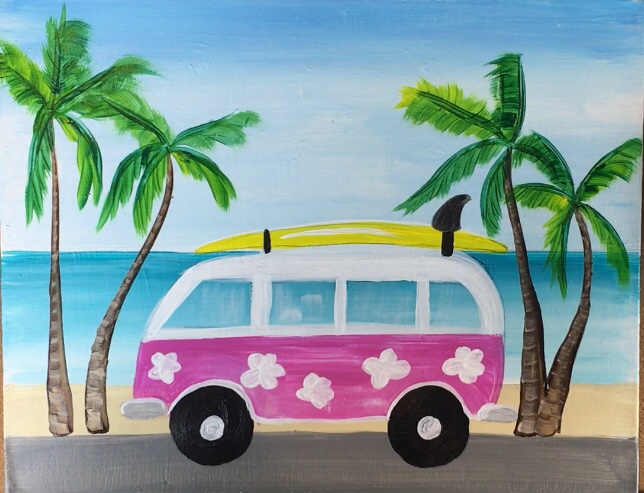
11. Continue to add details to the van
Next I painted the flowers in with the 10/0 round and cadmium orange hue. 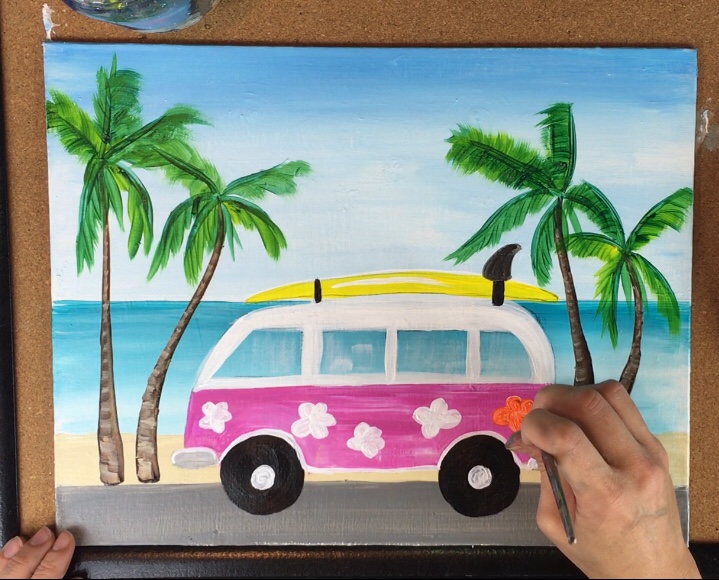
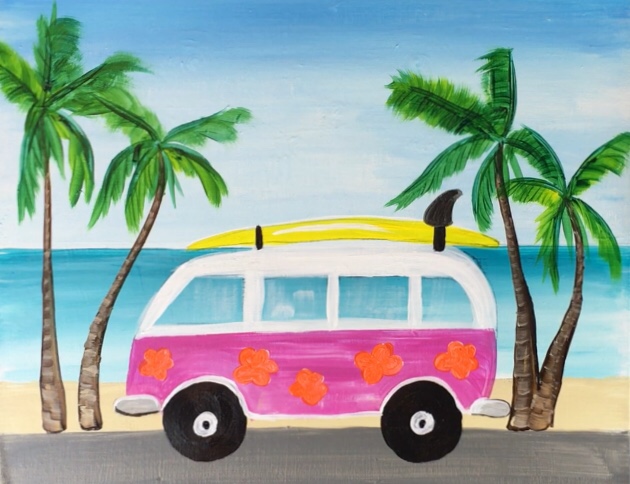
I also outlined the inside window frame using a black sharpie and outlined the front and back bumper.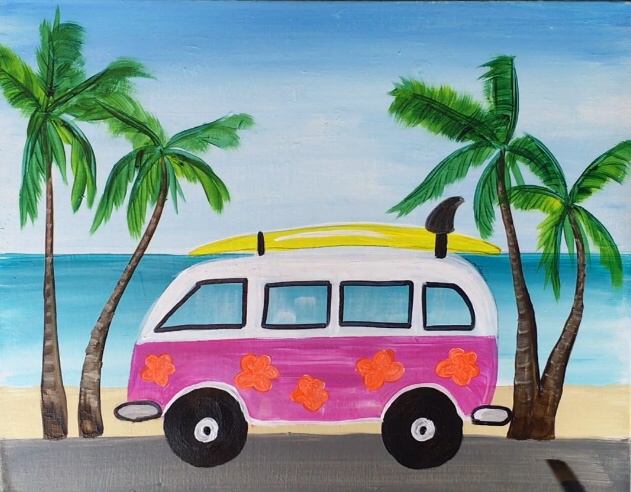
Underneath the van, I added some shadowing. To do the shadows, I used my #12 flat brush and mars black. I watered down the paint slightly to get it to be thin and translucent. 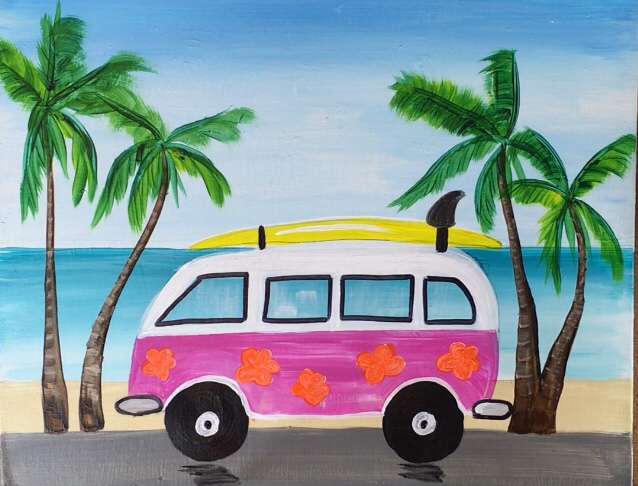
The shadows were painted under the palm tree trunks, the tires and the van. 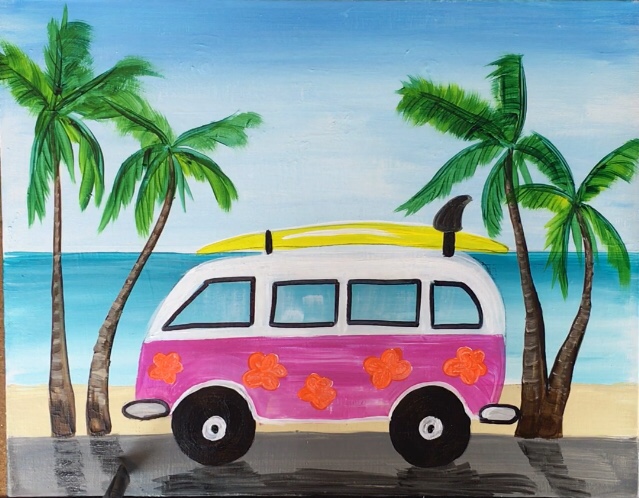
I also added a few more details on the van including vines connecting the flowers and a line defining the door on the side of the van. The sun was painted using a round pouncer sponge dipped in titanium white and primary yellow.
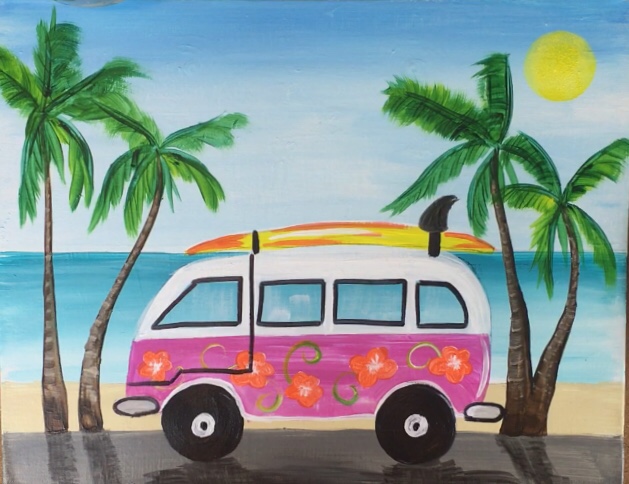
Finally, I painted some motion lines in the back of the van and around the tires using titanium white and a dry brush #4 round. 
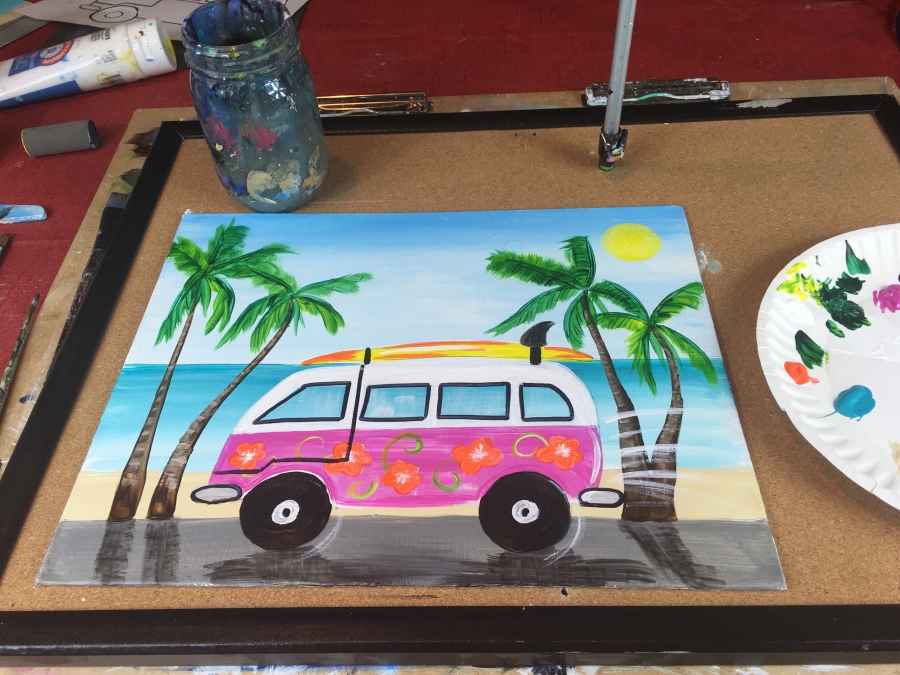
Finished
